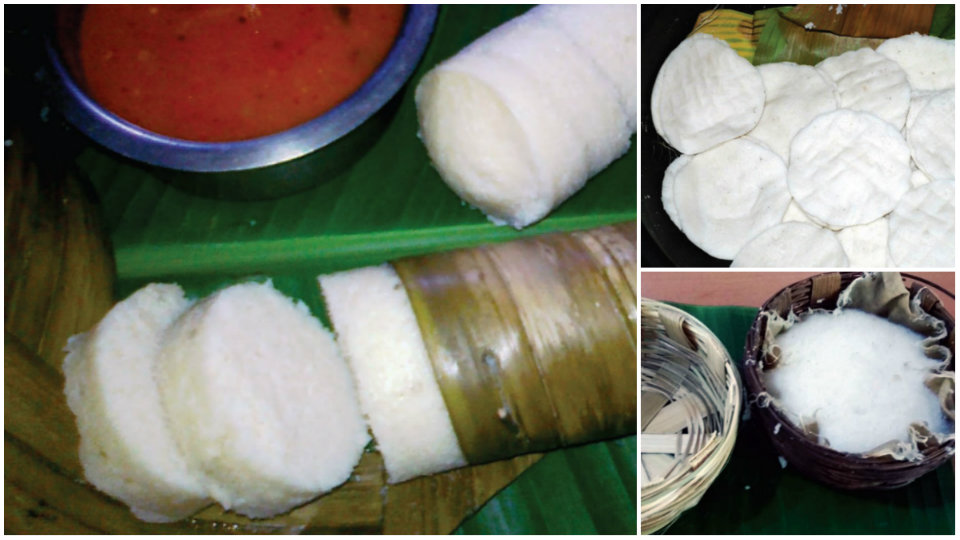By N.K.A. Ballal, Retd. Sr. Vice-President, ITDC
What is so special about March 30? Well, it is the “World Idli Day.” What is so special about this simple but popular dish? In layman’s word, a dish made from a fermented black lentil, rice, steamed and served with either a chutney or sambar. The fermentation process breaks down the starches so that they are easily digested. Since there is no oil involved in the preparation, it is also highly recommended by doctors, post surgery or illness too. So much so, the WHO recommends this dish as the healthiest food on this earth !
Where did this wonder dish originate from? Food historian K.T. Achaya opines that idli must have been invented in the kitchens of the Hindu kings of Indonesia, and not India since they were the only ones using “fermentation” as a process of cooking. The cooks must have travelled to India and brought with them the recipe of this dish during the 800-1200 ce. The modern idli (idly) is also mentioned in several Kannada literary works but most of them refer to using the urad dal and not mention the usage of rice, the fermentation and the steaming process, which is the most unique thing about this wonder dish. Kannadigas claim that this dish has been invented by their ancestors but since it has found mention in some Tamil literature books, Tamilians too claim copyright of this wonder dish.
How healthy is this dish? Have a look:
Idli [30 gm]
Energy – 167 kJ [40 kcal]
Carbohydrates – 7.89 G
Dietary fibre – 1.5 G
Fat – 0.19 G
Saturated – 0.037 G
Mono-unsaturated – 0.035 G
Poly-unsaturated – 0.043 G
Protein – 1.91 G
Minerals
Potassium – 63 Mg (1%)
Sodium – 207 Mg (14%)
Let us now explore some variations of this dish as found in our Mahaan Bharat.
- Mallige idli or jasmine idli: The idli rice is ground with urad dal, methi seeds and fermented. Poha or sago is also added. For quick fermentation, hoteliers add soda but if one gives sufficient time for fermentation this is not necessary. In Tamil Nadu, this idli is called as khusboo idli. In places like Madurai, idli is consumed with non-vegetarian dishes during dinner in every nook and corner of the city. Extract of “amanakku” seed is also used for making the idli fluffy and extra soft in Tamil Nadu. In some hotels, coarse idli rice powder is added to the urad dal mixture to make another variation of the idli. Nowadays many a variation like ragi idli, oats idli, mini idli, millet idli etc., is being prepared for the health freaks.
- Kancheevaram idli: This idli is basically prepared in temples. The rice is ground coarsely with fenugreek [methi], cumin, ginger powder and pepper is added to give its unique taste. Hing is optional. Even without refrigeration, this idli can last for few days.
- Ramassery idli: This town, 10 kms from Palakkad town, is famous for its unique idli. The idlis are not in the familiar size or shape. They are flatter, they are prepared on clay containers with threaded frames. Since it is prepared on wood fire, one can make only about 100 idlis in an hour. Regular idli batter but unique preparation.
- Moode idli from Udupi: A unique idli made by steaming the idli dough in a cup made from screw pine leaves [pandanus or kewda leaves]. The making of this cup itself is an art since the dough does not come out while steaming. The way I like to eat this dish is with coconut oil and a midi pickle [another Udupi speciality]. Can stay unrefrigerated for quite some time.
- Goan sannas: Traditionally, this dish is made using toddy but nowadays yeast is used as fermentation medium. Goan rice is used for making this dish eaten with pork vindaloo.
- Rava idli: A dish made with fine rava [semolina], curd, soda and steamed. It is said that the famous restaurant MTR first invented this variation. The instant variety is available in all shops across the world.
Apart from these varieties mentioned above, each State/District of India have their own variations of this dish.
To conclude, a new idli shop has opened at the entrance of k.C. Layout called “Halli Hatti” serving a new variety of idli made in bamboo baskets (Chiblu idli) ! Unique flavour. A must try next time you visit Chamundi Hill.








Mention the famous tatte idli from Kyatasandra.
Thanks for the mouth watering idli variations and recipes. I would like to add that my maternal grandfather, a doctor by profession, ate idlis for breakfast for a long and healthy life. I remember eating idlis with black pepper prepared for Upakarma by my dear mother. Incidentally idli with sambar and chutney are my favorite dish as well.
All the very best.
Arun